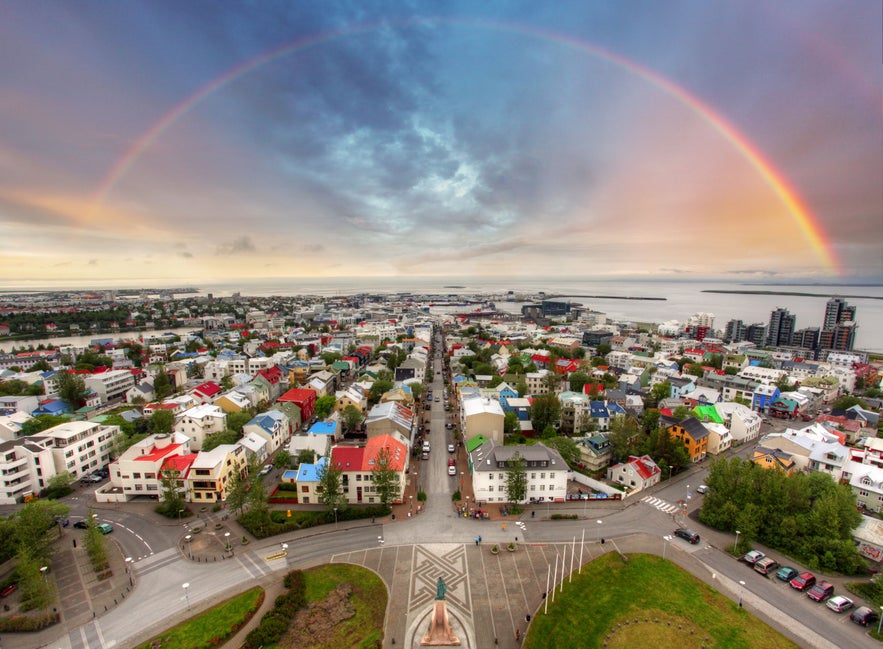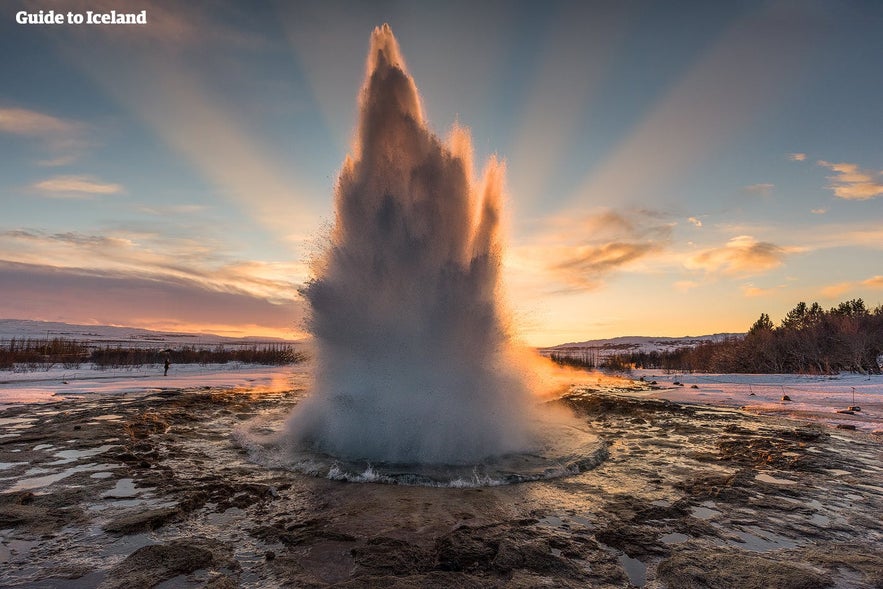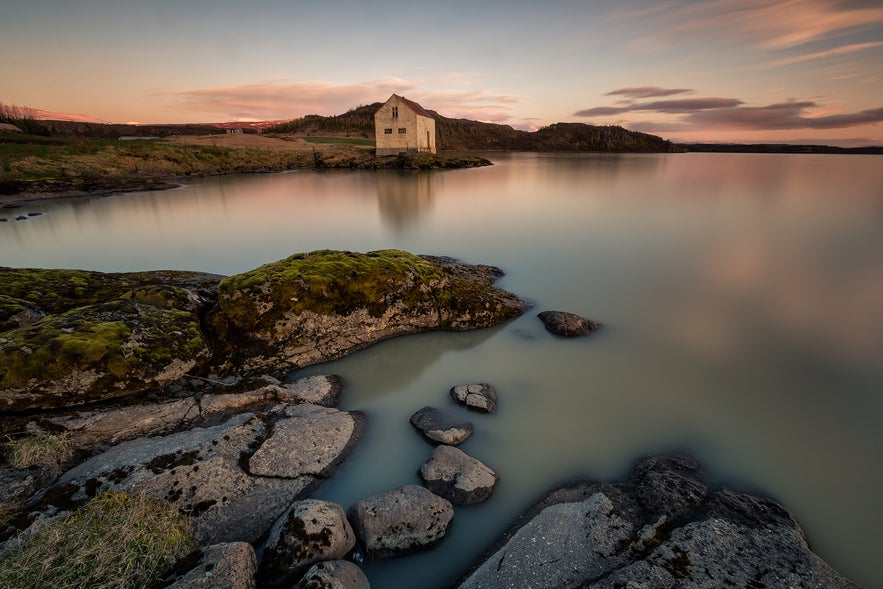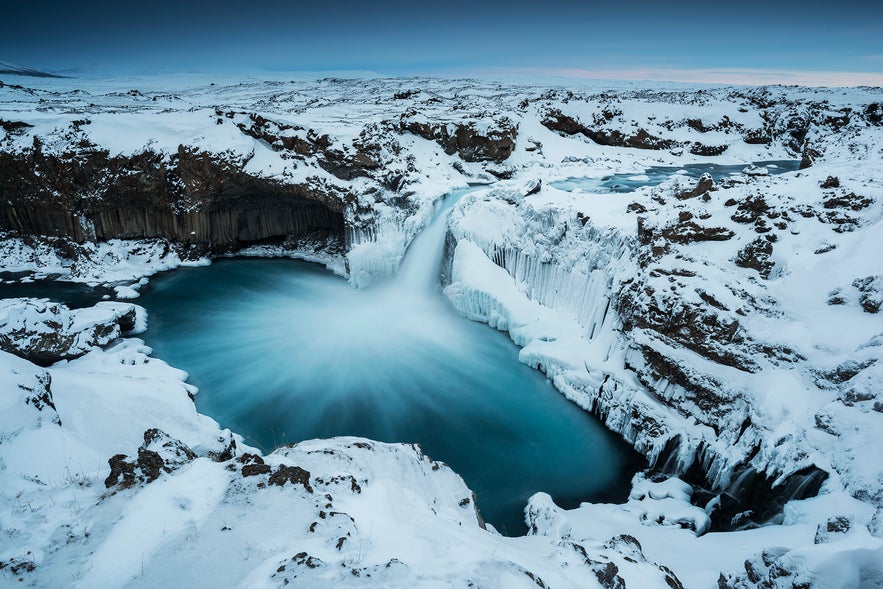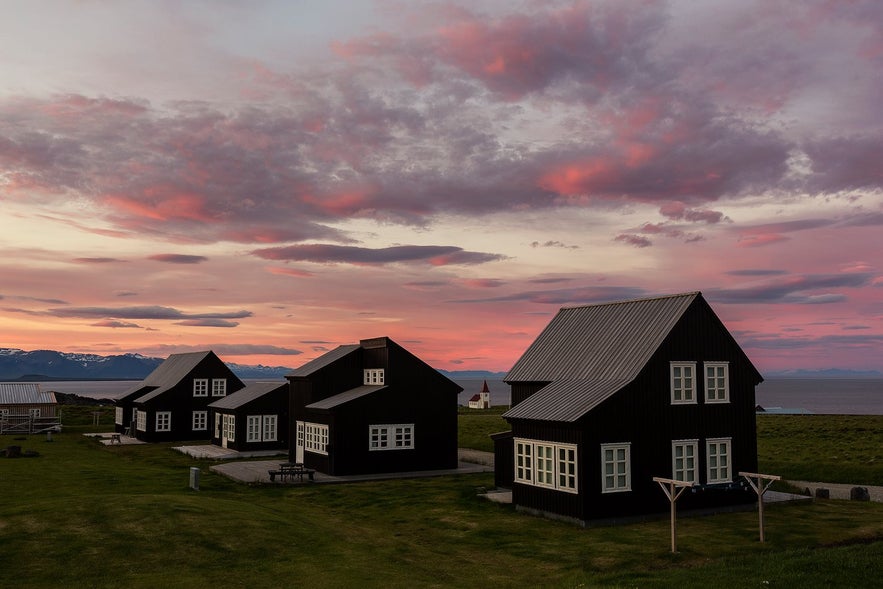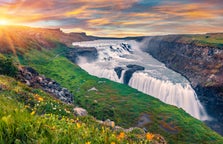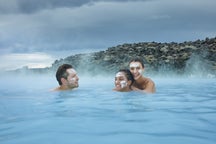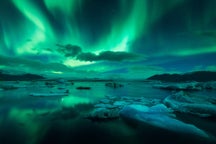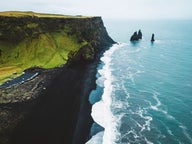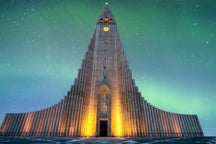Where should you shop in Iceland? What are the best souvenirs to bring home? And where can you find fresh food along your journey? From hand-knitted wool sweaters to fresh Icelandic delicacies, here's how to shop like a local.
Shopping in Iceland is a mix of urban charm and rural authenticity. While Reykjavik offers a vibrant shopping scene with local boutiques and artisan shops, exploring beyond the capital leads to hidden gems — farmers' markets, craft stores, and independent designers showcasing Icelandic heritage. Many of these stops are also featured on popular tours in Iceland, giving travelers the chance to shop directly from local makers while discovering the country’s natural beauty.
However, not everything sold in souvenir shops is genuinely Icelandic, and it's easy to fall into the trap of overpriced, imported goods.
To make the most of your shopping experience, keep two key considerations in mind. First, be aware of customs regulations — many countries restrict certain animal and plant-based products, such as fur, bones, or fresh food. Second, seasonal closures are common in rural areas, with some shops outside Reykjavik and the South Coast only open in summer.
Quick Facts about Shopping in Iceland
-
Reykjavik is the shopping hub of Iceland — The capital city offers a mix of boutiques, malls, and unique shops, providing a diverse shopping experience.
-
Authenticity is key — Many shops sell touristy items, so seek out places like the Handknitting Association and Una Local Product for genuine Icelandic products.
-
Regional differences exist — Shopping experiences vary greatly between regions, with rural areas offering local crafts and produce and Reykjavik providing a wider selection of goods.
-
Be mindful of store hours — Store hours, especially in smaller towns, can be limited, and many places are closed on Sundays.
-
Tax refunds are possible — Tourists can claim a VAT refund on purchases over 6,000 ISK at participating stores.
-
Ready to level up your Iceland trip? — VIP perks, coming right up.
- Read about the Best Shops in Reykjavik
- Here are the Top 10 Souvenirs from Iceland
- Learn about 14 Amazing Icelandic Design Projects
Shopping Districts in Reykjavik
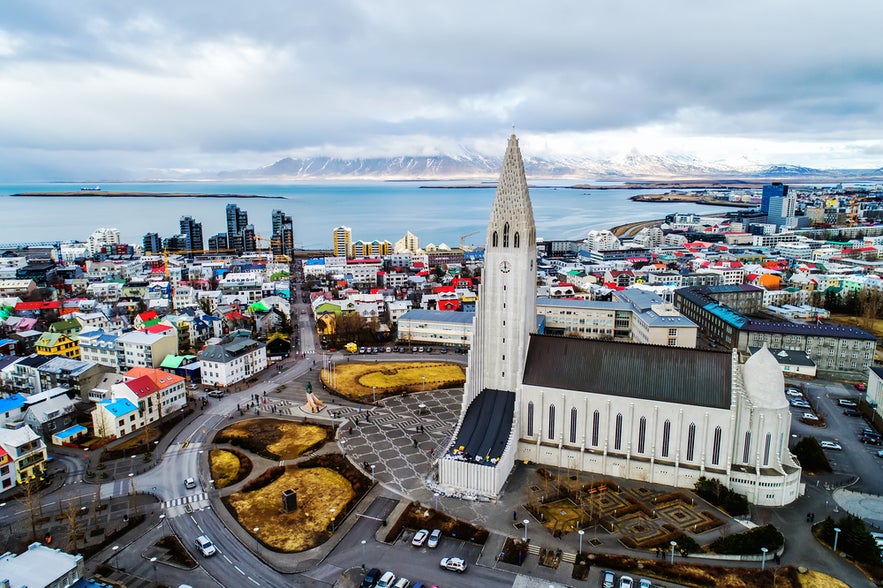 As Iceland’s capital and largest city, Reykjavik is the heart of the country’s shopping scene. From charming boutiques on Laugavegur Street to bustling shopping malls and hidden gems, there’s something for every type of shopper. Whether you’re searching for authentic Icelandic crafts, stylish local fashion, or simply a place to browse, Reykjavik has it all.
As Iceland’s capital and largest city, Reykjavik is the heart of the country’s shopping scene. From charming boutiques on Laugavegur Street to bustling shopping malls and hidden gems, there’s something for every type of shopper. Whether you’re searching for authentic Icelandic crafts, stylish local fashion, or simply a place to browse, Reykjavik has it all.
Laugavegur Street
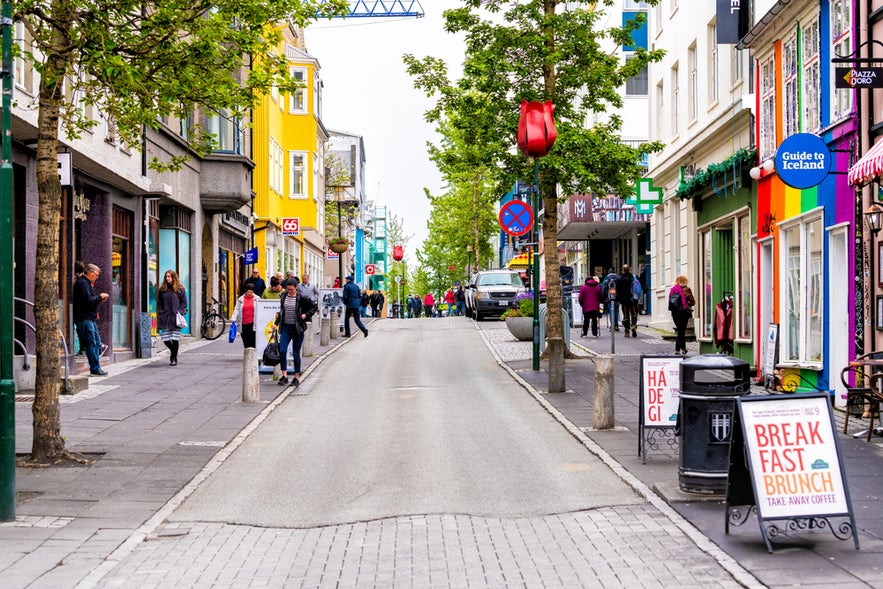 Laugavegur is Reykjavik’s main shopping street and one of the city’s liveliest areas. Stretching through the downtown area, it’s lined with a mix of high-end boutiques, local designer shops, souvenir stores, and trendy cafes. As one of the oldest streets in Reykjavik, Laugavegur has long been the heart of the city's commercial scene, evolving from a simple thoroughfare into a bustling shopping and nightlife district.
Laugavegur is Reykjavik’s main shopping street and one of the city’s liveliest areas. Stretching through the downtown area, it’s lined with a mix of high-end boutiques, local designer shops, souvenir stores, and trendy cafes. As one of the oldest streets in Reykjavik, Laugavegur has long been the heart of the city's commercial scene, evolving from a simple thoroughfare into a bustling shopping and nightlife district.
While many shops cater to tourists with souvenirs, you’ll also find authentic Icelandic fashion brands, outdoor gear retailers, and specialty stores offering unique, locally made products. Whether you're searching for stylish wool clothing, handcrafted jewelry, or just a cozy cafe to people-watch, Laugavegur offers a little something for everyone. Plus, with its pedestrian-friendly design, it’s an ideal place for a leisurely stroll while exploring the city.
-
Hungry after shopping? Discover the best restaurants in Reykjavik, just steps away.
Skolavordustigur Street
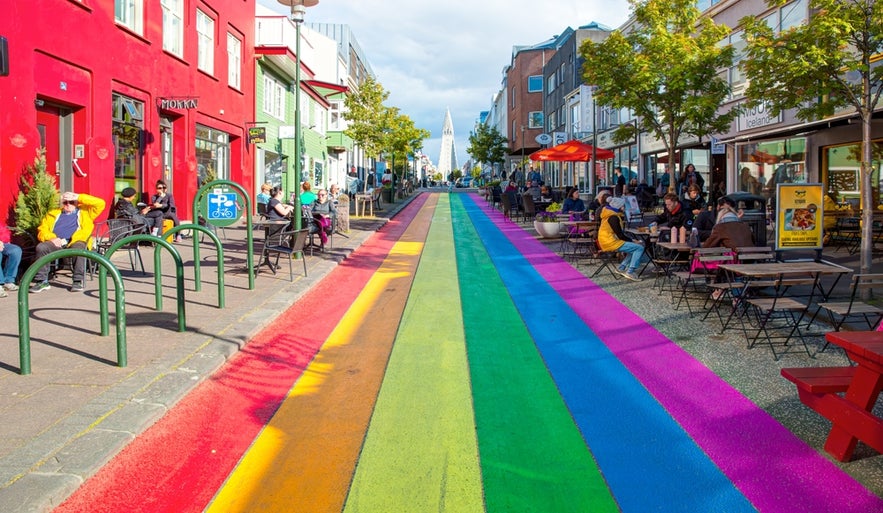 Skolavordustigur is one of Reykjavik’s most charming streets, known for its mix of local boutiques, art galleries, and cafes. Leading to the iconic Hallgrimskirkja Church, this rainbow-painted street offers a more relaxed shopping experience compared to the bustling Laugavegur. It's a great place to find unique Icelandic art, handmade jewelry, and locally crafted goods.
Skolavordustigur is one of Reykjavik’s most charming streets, known for its mix of local boutiques, art galleries, and cafes. Leading to the iconic Hallgrimskirkja Church, this rainbow-painted street offers a more relaxed shopping experience compared to the bustling Laugavegur. It's a great place to find unique Icelandic art, handmade jewelry, and locally crafted goods.
Alongside the shops, Skolavordustigur has several cozy cafes, making it a perfect spot to take a break while exploring the local designs and culture. Whether you're looking for a special souvenir or just want to enjoy Reykjavik's artistic vibe, Skolavordustigur is a must-visit.
Kringlan Shopping Mall
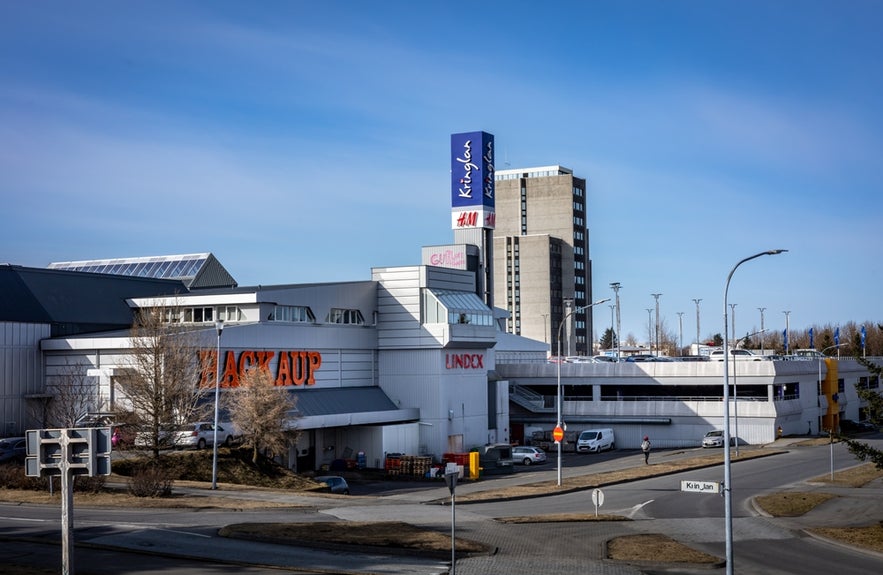 Kringlan is one of Reykjavik’s largest shopping malls, offering a diverse selection of over 170 stores, restaurants, and entertainment options. Located just a short drive or bus ride from downtown, it’s a convenient destination for those looking to shop for both Icelandic and international brands under one roof. The mall features a mix of fashion retailers, bookstores, electronics shops, and home goods stores, making it a great stop for travelers needing essentials or looking for unique Icelandic shops.
Kringlan is one of Reykjavik’s largest shopping malls, offering a diverse selection of over 170 stores, restaurants, and entertainment options. Located just a short drive or bus ride from downtown, it’s a convenient destination for those looking to shop for both Icelandic and international brands under one roof. The mall features a mix of fashion retailers, bookstores, electronics shops, and home goods stores, making it a great stop for travelers needing essentials or looking for unique Icelandic shops.
In addition to shopping, Kringlan has a cinema, a food court, and several sit-down restaurants, providing a well-rounded indoor experience — especially on cold or rainy days. Whether you’re after stylish clothing, Icelandic design pieces, or a casual place to relax, Kringlan is a go-to shopping hub in Reykjavik.
Smaralind Shopping Mall
 Smaralind is the largest shopping mall in Iceland, located in the town of Kopavogur, within the Reykjavik capital region. With over 100 stores, restaurants, and entertainment venues, it offers a modern shopping experience with a mix of Icelandic and international brands. The mall is home to fashion boutiques, popular chain stores, electronics retailers, and home decor shops, making it a great destination for both everyday shopping and unique finds.
Smaralind is the largest shopping mall in Iceland, located in the town of Kopavogur, within the Reykjavik capital region. With over 100 stores, restaurants, and entertainment venues, it offers a modern shopping experience with a mix of Icelandic and international brands. The mall is home to fashion boutiques, popular chain stores, electronics retailers, and home decor shops, making it a great destination for both everyday shopping and unique finds.
Smaralind features a cinema, a food court, and family-friendly entertainment options, making it a popular spot for locals and visitors alike. Whether you're looking for stylish apparel, Icelandic souvenirs, or a cozy indoor escape from the elements, Smaralind provides a spacious and diverse shopping experience.
Unique Shopping Experiences in Reykjavik
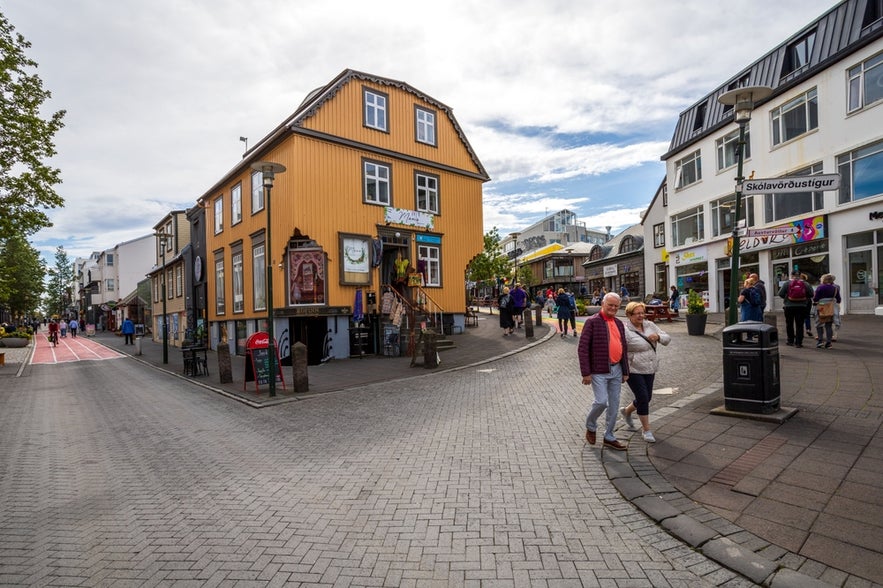 Beyond the main shopping streets and malls, Reykjavik is home to several shops where you can find authentic Icelandic goods, handcrafted items, and fresh local produce. Whether you’re searching for a traditional lopapeysa sweater, unique second-hand finds, or farm-to-table delicacies, these hidden gems offer a shopping experience you won’t find anywhere else.
Beyond the main shopping streets and malls, Reykjavik is home to several shops where you can find authentic Icelandic goods, handcrafted items, and fresh local produce. Whether you’re searching for a traditional lopapeysa sweater, unique second-hand finds, or farm-to-table delicacies, these hidden gems offer a shopping experience you won’t find anywhere else.
Kolaportid Flea Market
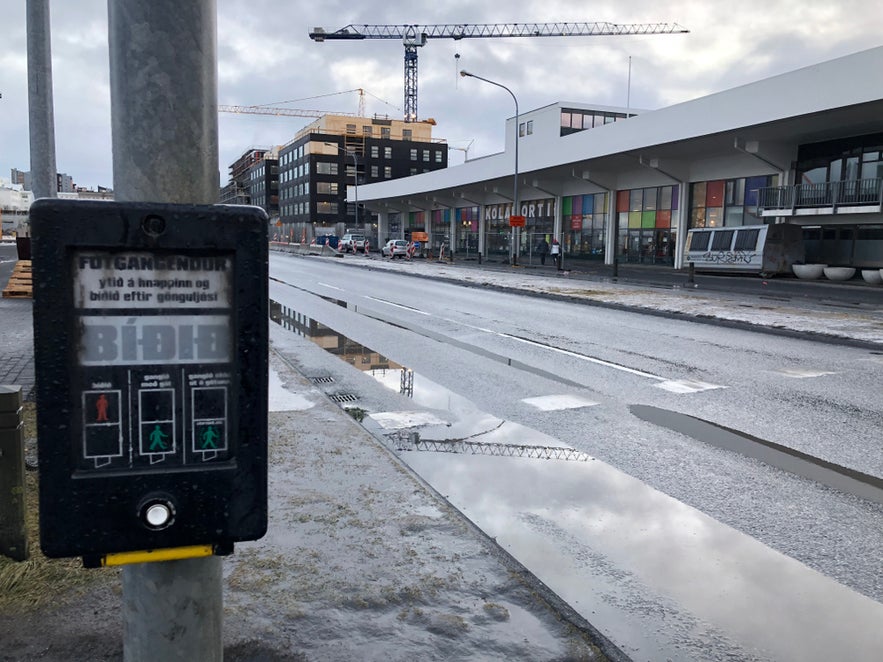 For bargain hunters and lovers of vintage treasures, Kolaportid is Reykjavik’s go-to flea market. Open on weekends, it's the only place in the area where haggling is encouraged — especially late on Sundays when vendors are eager to sell off their goods. Here, you’ll find everything from second-hand books and vinyl records to Icelandic sweaters, handcrafted jewelry, and even traditional Icelandic fare like fermented shark.
For bargain hunters and lovers of vintage treasures, Kolaportid is Reykjavik’s go-to flea market. Open on weekends, it's the only place in the area where haggling is encouraged — especially late on Sundays when vendors are eager to sell off their goods. Here, you’ll find everything from second-hand books and vinyl records to Icelandic sweaters, handcrafted jewelry, and even traditional Icelandic fare like fermented shark.
Location: Tryggvagata 19
Thorvaldsens Bazar
Founded in 1901, Thorvaldsens Bazaar is Reykjavik’s oldest shop and a must-visit for high-quality, hand-knitted wool products. Run by Thorvaldsensfelagid, a charitable organization, all proceeds go toward helping children in need, making every purchase feel more special. Alongside its impressive selection of traditional Icelandic sweaters, hats, and mittens, the store also sells beautifully crafted ornaments and souvenirs.
Location: Austurstraeti 4
The Handknitting Association of Iceland
 If you’re looking for a lopapeysa (the iconic Icelandic wool sweater), the Handknitting Association of Iceland is one of the best places to find authentic, locally made knitwear. Unlike many souvenir shops that sell factory-made imitations, this store offers genuine, hand-knitted pieces crafted by local artisans. They also have an impressive selection of Icelandic yarn for those interested in knitting their own Icelandic designs.
If you’re looking for a lopapeysa (the iconic Icelandic wool sweater), the Handknitting Association of Iceland is one of the best places to find authentic, locally made knitwear. Unlike many souvenir shops that sell factory-made imitations, this store offers genuine, hand-knitted pieces crafted by local artisans. They also have an impressive selection of Icelandic yarn for those interested in knitting their own Icelandic designs.
Location: Skolavordustigur 19
Want more than shopping? Discover Iceland through hands-on experiences, perfect for shoppers and creatives alike.
-
The Reykjavik Shopping Tour - Explore Reykjavik’s best boutiques and hidden gems with a local who knows where to find the good stuff. This personalized shopping tour is perfect if you want insider tips on Icelandic fashion, design, and unique souvenirs.
-
Private 1-Hour Skrimsli “Wool Monster” Workshop with Folklore Tour in Gardabaer - Get creative in this fun, hands-on workshop where you’ll design and make your very own Icelandic wool monster. Guided by a local artist, it’s a playful and memorable way to dive into Iceland’s wool tradition—no experience needed!
South Iceland Shopping Guide
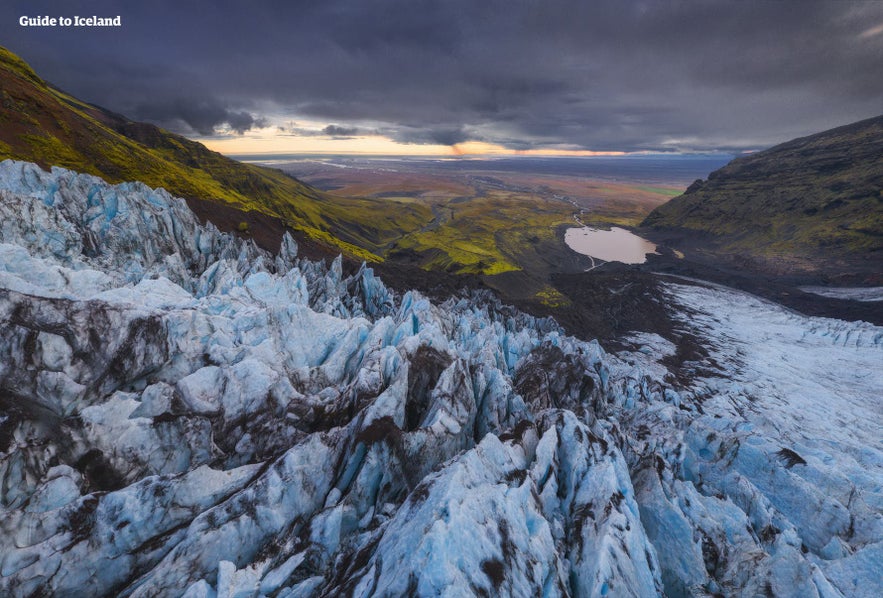
As you leave Reykjavik and journey south, the shopping experience transforms from city malls to charming villages where local craftsmanship and sustainable practices are on full display. From handcrafted souvenirs to fresh Icelandic produce, South Iceland offers a variety of shopping opportunities that reflect the region’s culture, creativity, and sustainability.
Hveragerdi – The Greenhouse Town
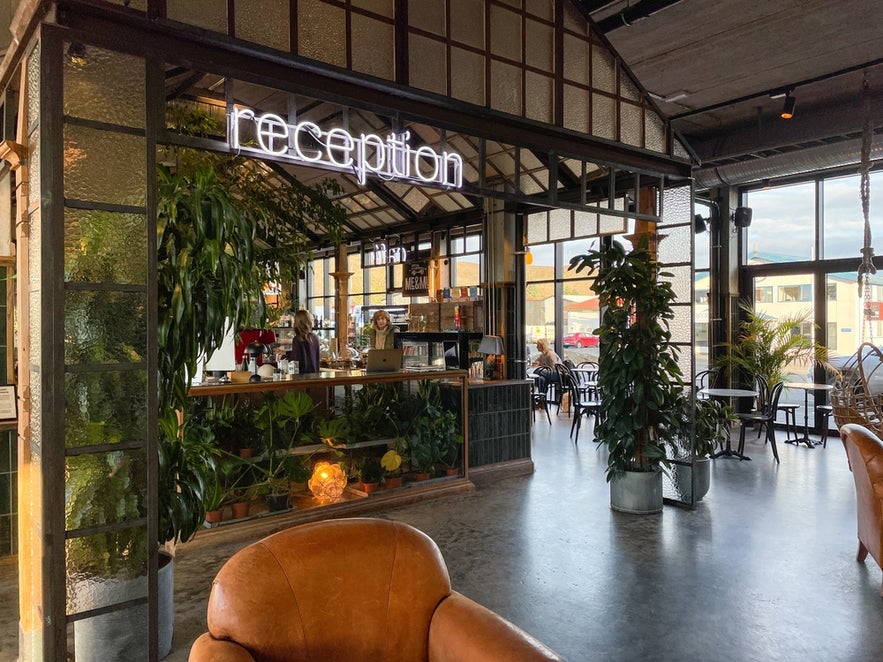 Nicknamed “the Earthquake Town” due to its geothermal activity, Hveragerdi is known for its thriving greenhouses and deep connection to horticulture. Flower enthusiasts can visit Hverablom, Gardplontusalan Borg, or Gardyrkjusto Ingibjargar, also known as “Flora,” for a beautiful selection of fresh blooms.
Nicknamed “the Earthquake Town” due to its geothermal activity, Hveragerdi is known for its thriving greenhouses and deep connection to horticulture. Flower enthusiasts can visit Hverablom, Gardplontusalan Borg, or Gardyrkjusto Ingibjargar, also known as “Flora,” for a beautiful selection of fresh blooms.
A highlight of Hveragerdi is The Greenhouse (Grodurhusid), a boutique hotel that also houses a shopping area and lively food hall on its first floor. As a Guide to Iceland VIP Club partner, it offers added perks to members, making it an ideal stop to browse local design and handcrafted goods and enjoy a variety of dining options — all in one creative, geothermal-inspired space.
Want to make a night of it? The Greenhouse Hotel offers cozy, design-forward accommodations just upstairs.
Selfoss – Icelandic Handicrafts
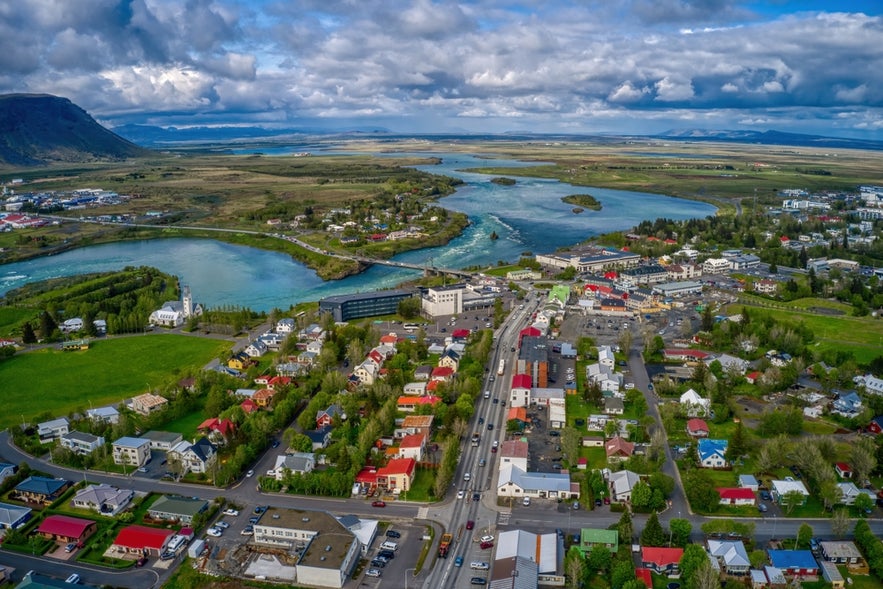 Continuing along Route 1 south, the town of Selfoss is a must-visit for those seeking Icelandic handicrafts. Handverksskurinn features local art, handmade jewelry, and Icelandic knitwear, including the famous lopapeysa sweater. Thingborg Wool Shop, a wool processing factory and shop, specializes in high-quality wool-wear and offers books and knitting supplies. If you’re feeling inspired by Iceland’s knitting tradition, you can also pick up books and materials to create your own masterpiece.
Continuing along Route 1 south, the town of Selfoss is a must-visit for those seeking Icelandic handicrafts. Handverksskurinn features local art, handmade jewelry, and Icelandic knitwear, including the famous lopapeysa sweater. Thingborg Wool Shop, a wool processing factory and shop, specializes in high-quality wool-wear and offers books and knitting supplies. If you’re feeling inspired by Iceland’s knitting tradition, you can also pick up books and materials to create your own masterpiece.
While you’re in town, don’t miss the Selfoss New Old Town, a creative riverside district that blends historic architecture with modern flair. Part of the VIP Club, this area is home to locally owned shops, design boutiques, and cozy cafes, all set against the charm of reconstructed heritage buildings. Grab a bite to eat and soak in this small-town atmosphere with a fresh twist.
Passing through Hvolsvollur? Check out UNA Local Product for curated Icelandic gifts and local design.
Solheimar – Sustainable Shopping
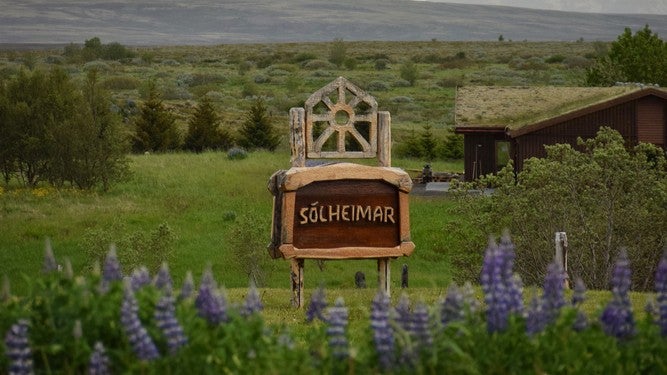 Nestled in the countryside, the eco-village of Solheimar is a testament to sustainability and community living. In the heart of the village, Graena Kannan Cafe serves as both a gathering place and a hub for locally made goods. Alongside its menu of organic, locally sourced dishes — including freshly roasted Solheimar coffee, homemade bread, and its beloved tomato soup — the cafe also houses the Vala Market and Gallery, where visitors can shop from a selection of handmade crafts made by the village’s residents.
Nestled in the countryside, the eco-village of Solheimar is a testament to sustainability and community living. In the heart of the village, Graena Kannan Cafe serves as both a gathering place and a hub for locally made goods. Alongside its menu of organic, locally sourced dishes — including freshly roasted Solheimar coffee, homemade bread, and its beloved tomato soup — the cafe also houses the Vala Market and Gallery, where visitors can shop from a selection of handmade crafts made by the village’s residents.
Items range from ceramics and candles to woven goods, herbal soaps, and wooden decorations, all reflecting the spirit of the Solheimar community. If you visit on a weekday between 11:30 AM and 1 PM, you can enjoy a fresh, seasonal lunch buffet featuring vegan and non-vegan options made with produce from the village’s on-site greenhouses and organic farm.
Fridheimar – Tomatoes & Horses
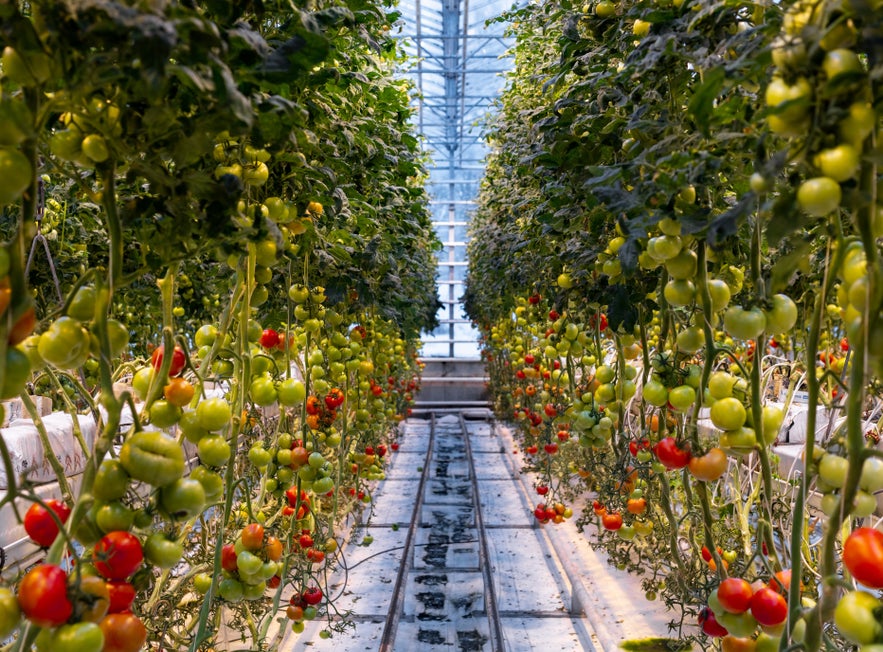 For a truly unique farm-to-table experience, Fridheimar offers a blend of agriculture and Icelandic equestrian culture. This family-run greenhouse grows ripe tomatoes and cucumbers year-round, thanks to Iceland’s geothermal energy. Visitors can tour the greenhouse, sample fresh produce, and dine in the on-site restaurant, where tomatoes are plucked straight from the vine and prepared into delicious dishes.
For a truly unique farm-to-table experience, Fridheimar offers a blend of agriculture and Icelandic equestrian culture. This family-run greenhouse grows ripe tomatoes and cucumbers year-round, thanks to Iceland’s geothermal energy. Visitors can tour the greenhouse, sample fresh produce, and dine in the on-site restaurant, where tomatoes are plucked straight from the vine and prepared into delicious dishes.
The restaurant is extremely popular, so advance reservations are strongly recommended — it’s often fully booked, especially in the summer. If you’re traveling with kids, be sure to check out the Icelandic horse show, which adds even more excitement to this memorable stop.
Geysir – Icelandic Design & Souvenirs
A bit farther inland, the Geysir Geothermal Area is home to one of Iceland’s most famous natural attractions — and an excellent souvenir shop. The Geysir shop offers high-quality Icelandic goods, including soft wool blankets, stylish lopapeysa sweaters, and skincare products infused with native herbs and minerals. While some souvenirs cater to tourists, many items reflect true Icelandic craftsmanship, making this a worthwhile stop.
Vik – Wool Factory Shopping
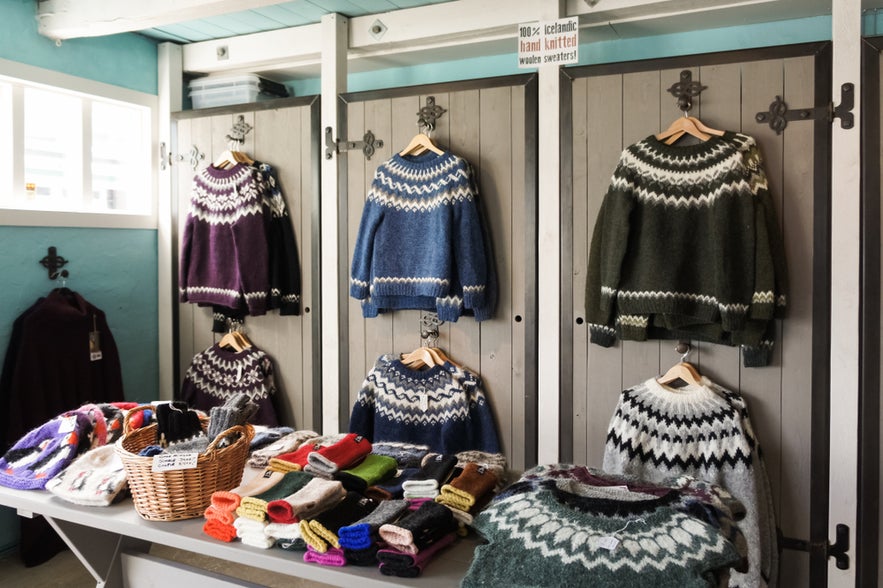 The final stop on this South Coast shopping journey is the picturesque village of Vik, home to Víkurprjon Ltd., one of Iceland’s oldest wool factories. Today, this shop is part of the Icewear brand, but still offers a mix of traditional and modern woolen designs, all crafted from local Icelandic wool. Whether you’re looking for a cozy sweater to keep warm or a stylish scarf as a keepsake, Víkurprjon’s selection highlights the best of Icelandic wool production.
The final stop on this South Coast shopping journey is the picturesque village of Vik, home to Víkurprjon Ltd., one of Iceland’s oldest wool factories. Today, this shop is part of the Icewear brand, but still offers a mix of traditional and modern woolen designs, all crafted from local Icelandic wool. Whether you’re looking for a cozy sweater to keep warm or a stylish scarf as a keepsake, Víkurprjon’s selection highlights the best of Icelandic wool production.
Hofn – Lobster & Local Crafts
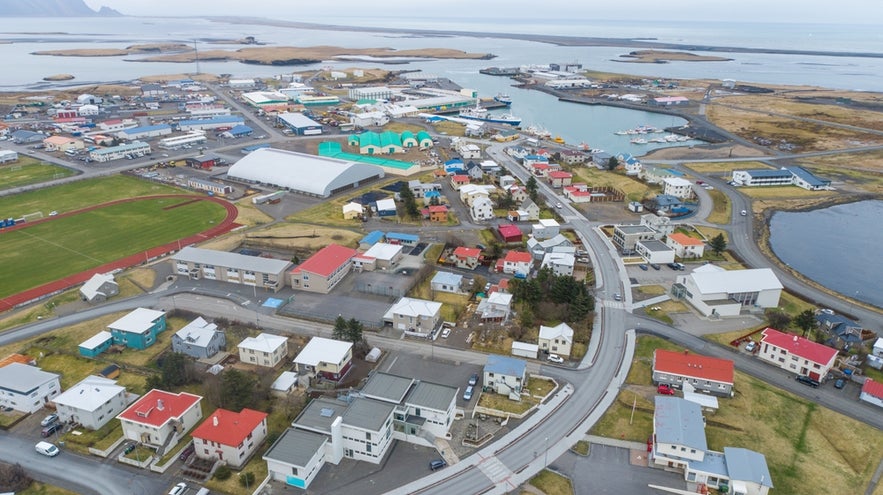 Just northeast of the stunning Jokulsarlon Glacier Lagoon, the coastal town of Hofn is known for its thriving arts and crafts scene. Stop by Hirdingjarnir, a local thrift shop that supports reigional charities, where you can browse secondhand treasures and unique finds, while giving back to the community. If you're visiting in July, you’ll have the chance to experience Humarhatid, the town’s annual lobster festival, celebrating Hofn’s reputation as the best place in Iceland to enjoy fresh lobster.
Just northeast of the stunning Jokulsarlon Glacier Lagoon, the coastal town of Hofn is known for its thriving arts and crafts scene. Stop by Hirdingjarnir, a local thrift shop that supports reigional charities, where you can browse secondhand treasures and unique finds, while giving back to the community. If you're visiting in July, you’ll have the chance to experience Humarhatid, the town’s annual lobster festival, celebrating Hofn’s reputation as the best place in Iceland to enjoy fresh lobster.
South Iceland – Adventures Beyond the Shops
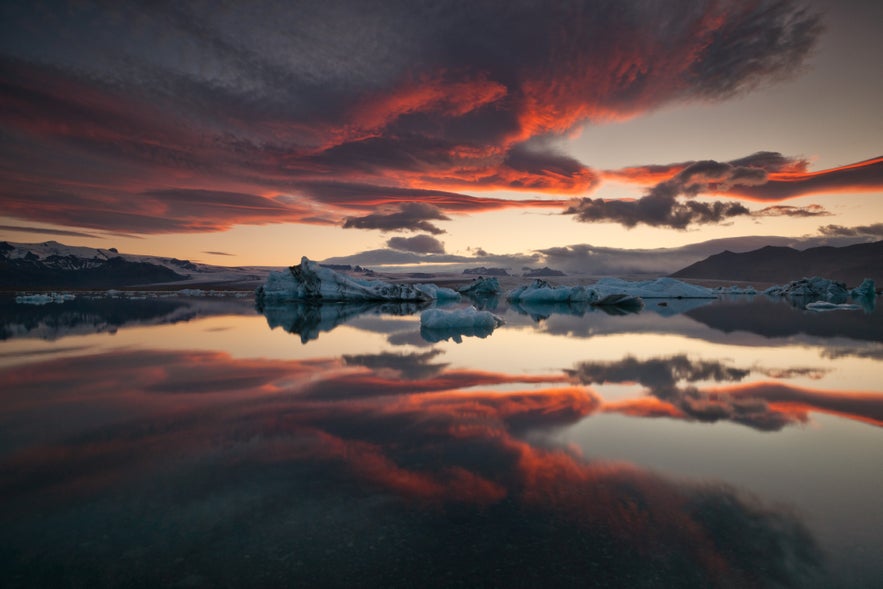 When you're not shopping 'til you drop in South Iceland, why not dive into an adventure? From glacier hikes to volcanic tours, there’s always something thrilling to do! Don't just take home souvenirs — take home unforgettable memories!
When you're not shopping 'til you drop in South Iceland, why not dive into an adventure? From glacier hikes to volcanic tours, there’s always something thrilling to do! Don't just take home souvenirs — take home unforgettable memories!
-
The Jokulsarlon Glacier Lagoon Boat Tour – Glide past towering icebergs on an amphibian boat tour through Iceland’s most iconic glacier lagoon. Keep an eye out for seals and hear fascinating facts from your guide along the way.
-
Glacier Hiking Tour on Solheimajokull – Strap on your crampons and explore the icy landscape of Sólheimajökull Glacier with an expert guide. This easy-to-moderate hike offers up-close views of crevasses, ice formations, and the glacier’s striking blue tones.
-
The Katla Ice Cave Tour – Step inside a natural ice cave beneath the Katla Volcano on this thrilling super jeep adventure. Marvel at the shimmering blue ice and volcanic formations in one of Iceland’s most accessible year-round ice caves.
Shopping in East Iceland
East Iceland is a land of dramatic fjords, rugged mountains, and small villages where local artistry and craftsmanship thrive. Though the region is sparsely populated, its hidden gems make it a rewarding destination for those seeking authentic Icelandic goods. Whether you're looking for handcrafted souvenirs, fresh local produce, or high-end designer pieces, the shops and markets scattered throughout East Iceland offer something truly special.
Djupivogur – A Cultural Haven
 Continuing north along Route 1, the fishing village of Djupivogur is one of East Iceland’s most artistic destinations. The town’s creative spirit is reflected in its famous “Eggs of Merry Bay” outdoor sculptures and the historic Langabud Cultural Center, which hosts art exhibitions and showcases local heritage.
Continuing north along Route 1, the fishing village of Djupivogur is one of East Iceland’s most artistic destinations. The town’s creative spirit is reflected in its famous “Eggs of Merry Bay” outdoor sculptures and the historic Langabud Cultural Center, which hosts art exhibitions and showcases local heritage.
Stop by JFS Handcrafts, which specializes in jewelry crafted from Icelandic stones, making it a perfect place to pick up an elegant, nature-inspired keepsake.
Stodvarfjordur – A Village in Cultural Transformation
 Nestled within a narrow fjord, the tiny village of Stodvarfjordur is undergoing an artistic revival. Once a historic fish factory, the Cultural Centre now serves as a creative hub, hosting art workshops, live performances, and a recording studio. Local artisans display their work at the Salthussmarkadur Art and Craft Market, where visitors can find everything from handmade Icelandic sweaters to contemporary crafts emerging from this flourishing creative community.
Nestled within a narrow fjord, the tiny village of Stodvarfjordur is undergoing an artistic revival. Once a historic fish factory, the Cultural Centre now serves as a creative hub, hosting art workshops, live performances, and a recording studio. Local artisans display their work at the Salthussmarkadur Art and Craft Market, where visitors can find everything from handmade Icelandic sweaters to contemporary crafts emerging from this flourishing creative community.
Vallanes – Organic Farm & Sustainable Foods
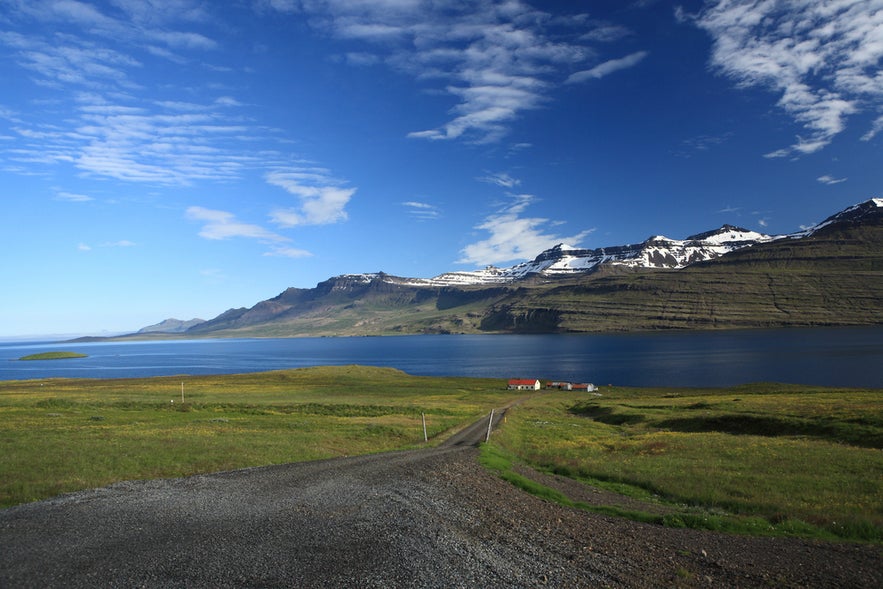 For travelers seeking fresh, organic Icelandic produce, Vallanes Farm is a must-visit destination open from May to October. Located just outside Egilsstadir, the largest settlement in East Iceland, Vallanes produces over 100 varieties of crops and a wide range of barley products, teas, oils, cereals, breads, and sweet pickled vegetables. Sold under the brand Modir Jord (Mother Earth), these products can be found throughout Iceland, including at organic markets in Reykjavik.
For travelers seeking fresh, organic Icelandic produce, Vallanes Farm is a must-visit destination open from May to October. Located just outside Egilsstadir, the largest settlement in East Iceland, Vallanes produces over 100 varieties of crops and a wide range of barley products, teas, oils, cereals, breads, and sweet pickled vegetables. Sold under the brand Modir Jord (Mother Earth), these products can be found throughout Iceland, including at organic markets in Reykjavik.
Egilsstadir – East Iceland’s Shopping Hub
 As the central hub of East Iceland, Egilsstadir offers the most diverse shopping experience in the region. The Hus Handanna Art and Design Shop is a treasure trove of wool-wear, ceramics, paintings, jewelry, and handmade furniture, making it the perfect place to find an authentic Icelandic souvenir.
As the central hub of East Iceland, Egilsstadir offers the most diverse shopping experience in the region. The Hus Handanna Art and Design Shop is a treasure trove of wool-wear, ceramics, paintings, jewelry, and handmade furniture, making it the perfect place to find an authentic Icelandic souvenir.
Seydisfjordur – Art & Handicrafts
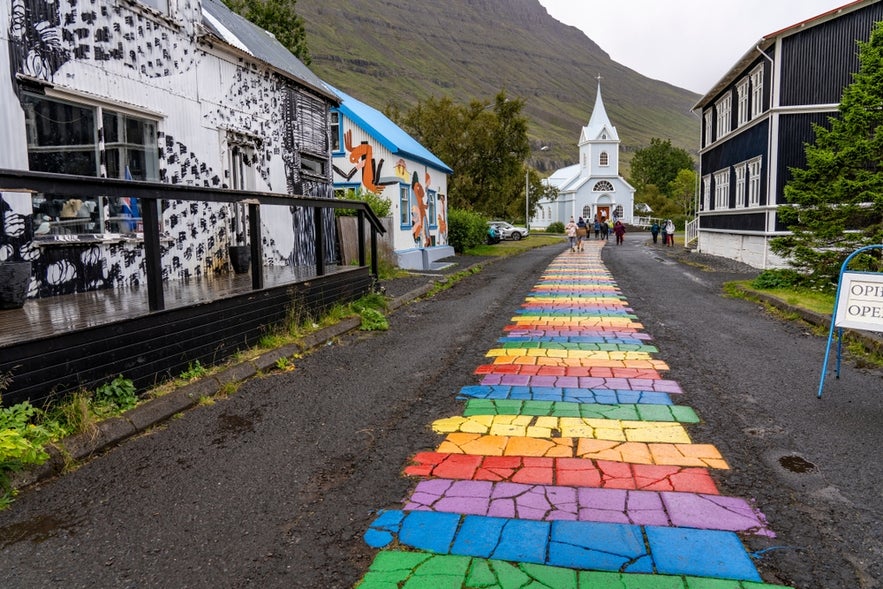 A 30-minute drive east of Egilsstadir along Route 93 leads to Seydisfjordur, a picturesque town renowned for its rich art scene. Here, visitors can explore a selection of handicraft shops, featuring local artwork, textiles, and unique Icelandic designs. After shopping, you can enjoy a meal at Nord Austur Sushi, where fresh Icelandic ingredients meet world-class sushi craftsmanship.
A 30-minute drive east of Egilsstadir along Route 93 leads to Seydisfjordur, a picturesque town renowned for its rich art scene. Here, visitors can explore a selection of handicraft shops, featuring local artwork, textiles, and unique Icelandic designs. After shopping, you can enjoy a meal at Nord Austur Sushi, where fresh Icelandic ingredients meet world-class sushi craftsmanship.
Craving more great food? Check out the best restaurants in East Iceland, including local favorites like Nord Austur.
Borgarfjordur Eystri – Lava Rock Creations
 For a truly off-the-beaten-path shopping experience, follow Route 94 north from Egilsstadir to Borgarfjordur Eystri, a remote settlement surrounded by breathtaking landscapes. At the Alfacafe, you’ll find charming handcrafted goods made from lava rock, including candleholders and clocks, all crafted by local artisans.
For a truly off-the-beaten-path shopping experience, follow Route 94 north from Egilsstadir to Borgarfjordur Eystri, a remote settlement surrounded by breathtaking landscapes. At the Alfacafe, you’ll find charming handcrafted goods made from lava rock, including candleholders and clocks, all crafted by local artisans.
East Iceland: Uncovering Glacial Treasures
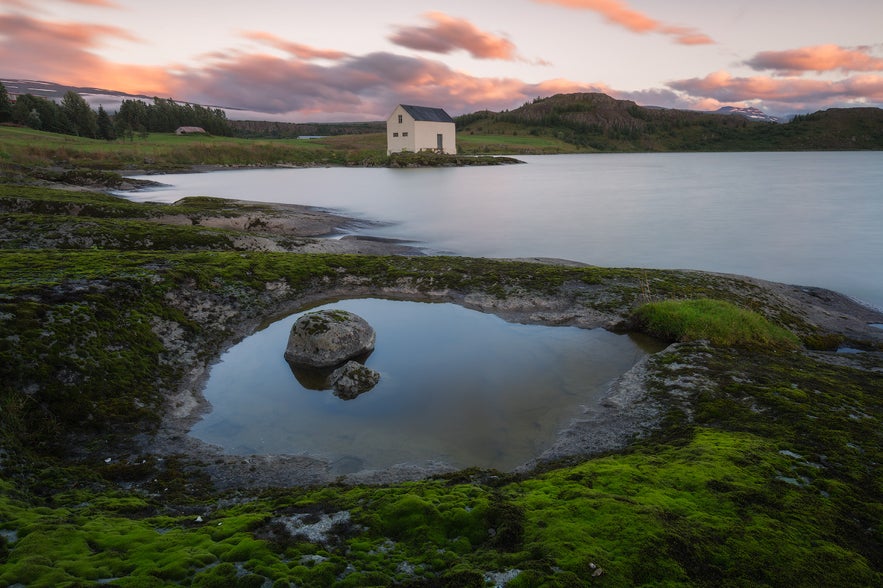 While you're discovering the hidden gems of East Iceland, why not add a little adventure to your itinerary? After all, the best souvenirs aren’t just the ones you can pack — they’re the experiences that stay with you.
While you're discovering the hidden gems of East Iceland, why not add a little adventure to your itinerary? After all, the best souvenirs aren’t just the ones you can pack — they’re the experiences that stay with you.
-
Relaxing 2-Hour Kayaking Tour in Eastfjords from Djupivogur – Paddle beneath the striking peak of Bulandstindur on this peaceful two-hour kayaking tour. Enjoy calm waters, stunning coastal views, and a fresh perspective on the Eastfjords' natural beauty.
-
Vok Baths Admission near Egilsstadir in East Iceland – Soak in warm, geothermally heated pools that float on Lake Urridavatn. With stunning views and a serene atmosphere, Vok Baths offer a perfect East Iceland retreat.
-
3-Hour Horse Riding Wilderness Tour in the Countryside of East Iceland – Ride through scenic valleys and along mountain trails on this guided tour with friendly Icelandic horses. A peaceful and memorable way to experience the quiet beauty of East Iceland.
Shopping in North Iceland
North Iceland is a vast and breathtaking region, where most of the population is concentrated in Akureyri, the unofficial capital of the North, while smaller fishing villages dot the dramatic coastline. Despite its remoteness, the region has a thriving market for local crafts, art, and unique Icelandic souvenirs. Whether you’re exploring the volcanic landscapes of Lake Myvatn, the whale-watching town of Husavik, or the charming streets of Akureyri, you’ll find plenty of opportunities to pick up authentic Icelandic goods.
Lake Myvatn – Handicrafts in a Volcanic Wonderland
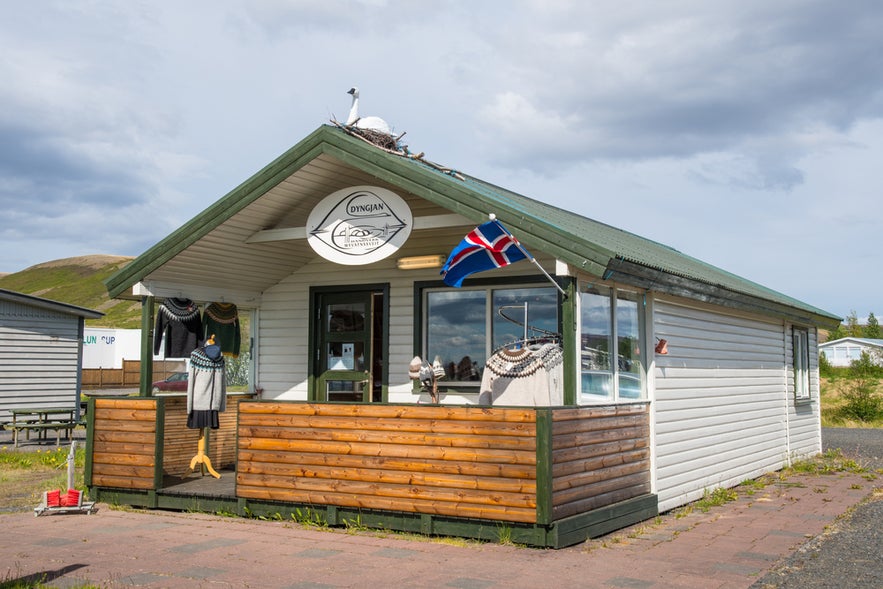 Located in the heart of North Iceland, Lake Myvatn is renowned for its otherworldly landscapes, rich birdlife, and geothermal wonders. It’s also home to Dyngjan Gallery and Market, a small but excellent shop located next to the Tourist Information Centre. Open during the summer months, this market features handmade crafts and artworks by local artists.
Located in the heart of North Iceland, Lake Myvatn is renowned for its otherworldly landscapes, rich birdlife, and geothermal wonders. It’s also home to Dyngjan Gallery and Market, a small but excellent shop located next to the Tourist Information Centre. Open during the summer months, this market features handmade crafts and artworks by local artists.
For a larger selection, the Myvatn Market at Dimmuborgir offers additional Icelandic gifts, though visitors should be aware that some of the items lean toward the more touristy side.
Husavik – Handcrafted Goods & Unique Souvenirs
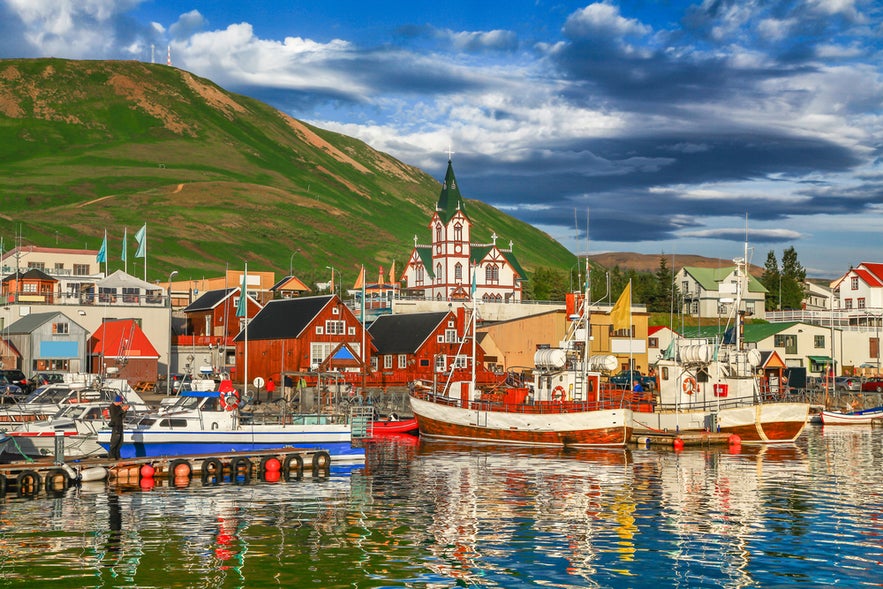 A short drive north from Myvatn along Route 87, the town of Husavik is world-famous for being the whale-watching capital of Europe. Beyond its incredible marine wildlife, the town also has a vibrant handicrafts scene.
A short drive north from Myvatn along Route 87, the town of Husavik is world-famous for being the whale-watching capital of Europe. Beyond its incredible marine wildlife, the town also has a vibrant handicrafts scene.
The best place to shop here is Kadlín, a boutique filled with handmade jewelry, Icelandic wool sweaters, homegrown teas, and locally produced jams. For those looking for something truly one-of-a-kind, the shop also stocks animal bones found on Iceland’s beaches — a peculiar yet fascinating gift option for those with a taste for the unusual.
Akureyri – The Capital of the North
 As North Iceland’s largest town, Akureyri is the best place to find boutiques, galleries, and specialty stores. Most of the city’s shopping is concentrated along Hafnarstraeti, the town’s main street, and in the Glerartorg mall.
As North Iceland’s largest town, Akureyri is the best place to find boutiques, galleries, and specialty stores. Most of the city’s shopping is concentrated along Hafnarstraeti, the town’s main street, and in the Glerartorg mall.
-
Systur & Makar – A stylish boutique featuring home décor, clothing, and jewelry, though not all items are Icelandic-made, so check labels if you're seeking local craftsmanship.
-
Linda Ola Studio and Gallery – A working artist’s studio where you can watch Linda Ola create stunning acrylics, oil paintings, etchings, candles, and sculptures, all available for purchase. Visitors are even welcome to browse when she’s present, even outside of regular opening hours.
Both of these shops are located downtown, with Linda Ola Studio at Hafnarstraeti 97 and Systur & Makar a short walk away at Strandgata 9.
The Christmas House – A Year-Round Winter Wonderland
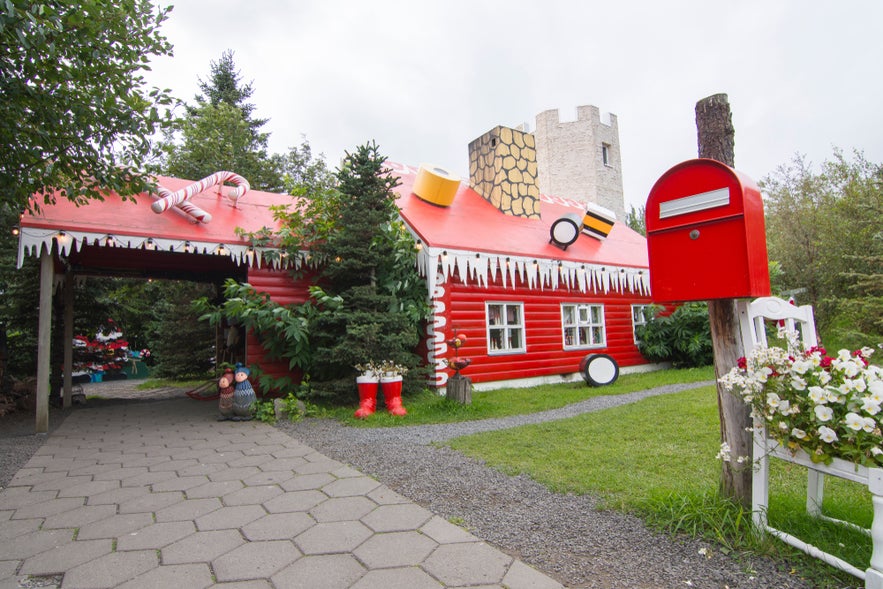 Just a 10-minute drive south of Akureyri, you’ll find The Christmas House and Garden (Jolahusid), where the festive spirit lasts all year. This magical shop sells Christmas decorations, holiday sweets, and trinkets from around the world, with a special selection of handmade Icelandic ornaments and crafts.
Just a 10-minute drive south of Akureyri, you’ll find The Christmas House and Garden (Jolahusid), where the festive spirit lasts all year. This magical shop sells Christmas decorations, holiday sweets, and trinkets from around the world, with a special selection of handmade Icelandic ornaments and crafts.
North Iceland – Shop Local, Then Dive into Exploration
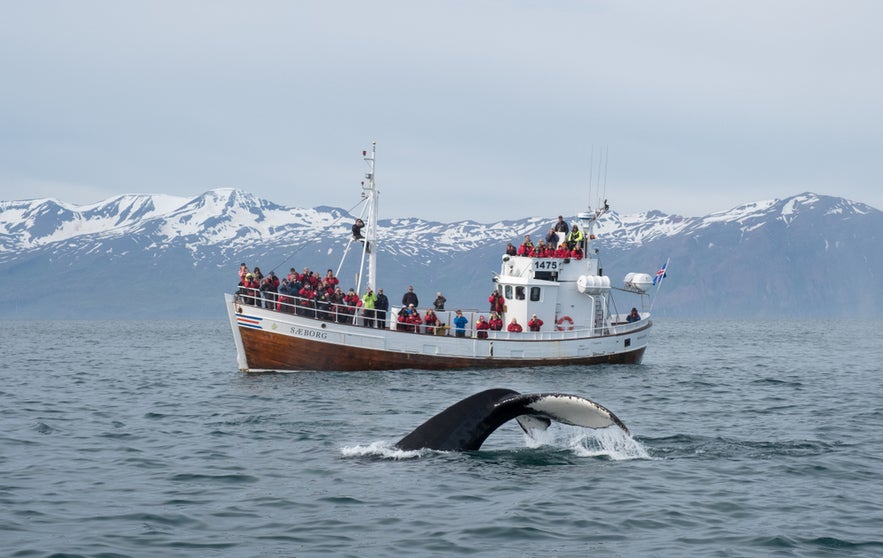 When you’re not busy shopping for local treasures in North Iceland, get ready for some epic adventures! There’s no shortage of experiences to match the unique finds you’ll discover.
When you’re not busy shopping for local treasures in North Iceland, get ready for some epic adventures! There’s no shortage of experiences to match the unique finds you’ll discover.
-
Whale Watching Tour with Transfer from Akureyri — Whale watch from the ‘capital of the North’, Akureyri, and witness the unbelievable wealth of marine life in Eyjafjordur
-
The Geosea Geothermal Baths in Husavik — Take a revitalizing dip into naturally heated seawater in the Geosea Sea Baths.
-
Lake Myvatn Sightseeing & Hot Springs Tour from Akureyri — Hop across the unique landscapes of Iceland with stops at Lake Myvatn and Godafoss Waterfall.
Shopping in West Iceland
West Iceland is home to stunning landscapes, charming villages, and rich cultural traditions. While most of the population resides in Reykjavik, there are several settlements across the Westfjords, Snaefellsnes Peninsula, and Borgarfjordur Fjord where travelers can find authentic Icelandic crafts, woolen goods, and unique souvenirs.
Isafjordur – The Cultural Hub of the Westfjords
 The Westfjords is Iceland’s most remote region, with tiny villages often inaccessible during winter. Shopping for local crafts and handmade Icelandic goods here can be challenging, but Isafjordur, the largest settlement, has many lovely boutiques, including the following.
The Westfjords is Iceland’s most remote region, with tiny villages often inaccessible during winter. Shopping for local crafts and handmade Icelandic goods here can be challenging, but Isafjordur, the largest settlement, has many lovely boutiques, including the following.
-
Karitas - This charming shop in the heart of Isafjordur features a curated selection of locally made clothing, accessories, and home goods, with a focus on quality craftsmanship and Icelandic design. It’s a great place to find something stylish, practical, and truly local.
Reaching Isafjordur from Akureyri requires a seven-hour drive via Route 1 to Route 68 to Route 60, so plan accordingly.
Stykkisholmur – Artisanal Treasures
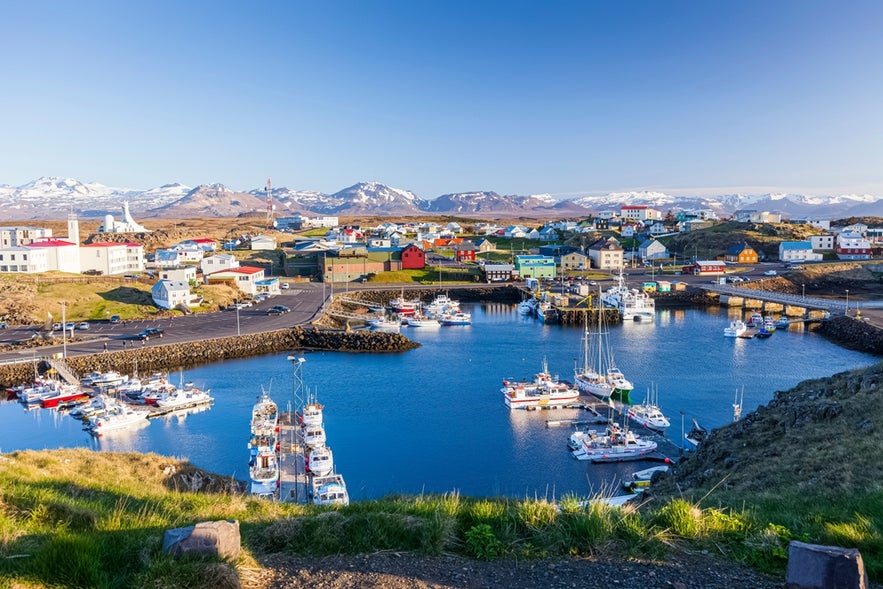 The picturesque town of Stykkisholmur on the Snaefellsnes Peninsula, known for its rich folklore and artistic community, is an excellent stop for those looking to explore Icelandic craftsmanship. Located about 170 miles (275 kilometers) from Reykjavik, it can be reached via Route 1 to Route 54, or about five hours from Isafjordur by following Route 61 to Route 60 to Route 54.
The picturesque town of Stykkisholmur on the Snaefellsnes Peninsula, known for its rich folklore and artistic community, is an excellent stop for those looking to explore Icelandic craftsmanship. Located about 170 miles (275 kilometers) from Reykjavik, it can be reached via Route 1 to Route 54, or about five hours from Isafjordur by following Route 61 to Route 60 to Route 54.
-
Smavinir – Now located inside the Norwegian House Museum, this charming woodcraft studio is run by artist Lára Gunnarsdóttir, who specializes in hand-carved and painted figurines made from Icelandic birch. Her whimsical creations—ranging from horses and birds to angels—make for truly delightful, one-of-a-kind souvenirs.
-
Galleri Lundi – A collective gallery and boutique showcasing a wide variety of handmade crafts from artists across the Snaefellsnes Peninsula; it is open daily from mid-May until late September, and on request.
Borgarnes – Community-Driven Shopping
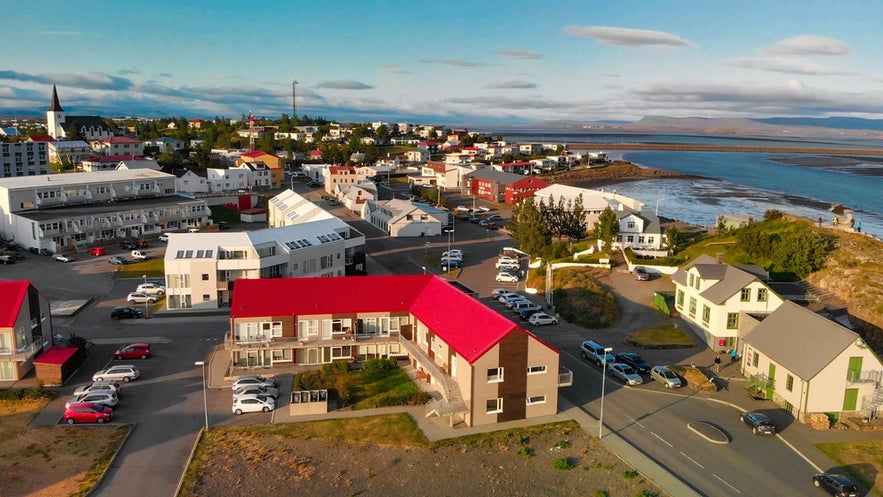 On the way back to Reykjavik, a stop in Borgarnes — just over an hour south of Stykkisholmur — is well worth it. Follow Route 54 to Route 56 to Route 54 to reach this charming town, which has some of the best artisan markets in West Iceland.
On the way back to Reykjavik, a stop in Borgarnes — just over an hour south of Stykkisholmur — is well worth it. Follow Route 54 to Route 56 to Route 54 to reach this charming town, which has some of the best artisan markets in West Iceland.
-
Haafell Goat Farm – This welcoming heritage farm is home to Iceland’s only goat herd and offers a fun, hands-on visit where you can pet the goats and browse a selection of farm-made products, including goat cheese, sausages, herbal creams, jams, and handcrafted goods. It’s a delicious and heartwarming stop for animal lovers and foodies alike.
-
Ljomalind Farmer’s Market – A community-run market where every item is locally produced and carefully curated by a local committee. The selection includes:
-
Ceramics & handcrafted ornaments
-
Traditional Icelandic sweaters & clothing
-
Paintings & locally made souvenirs
-
Food items such as jams, teas, produce, and Icelandic meat products
-
West Iceland – Adventures Await
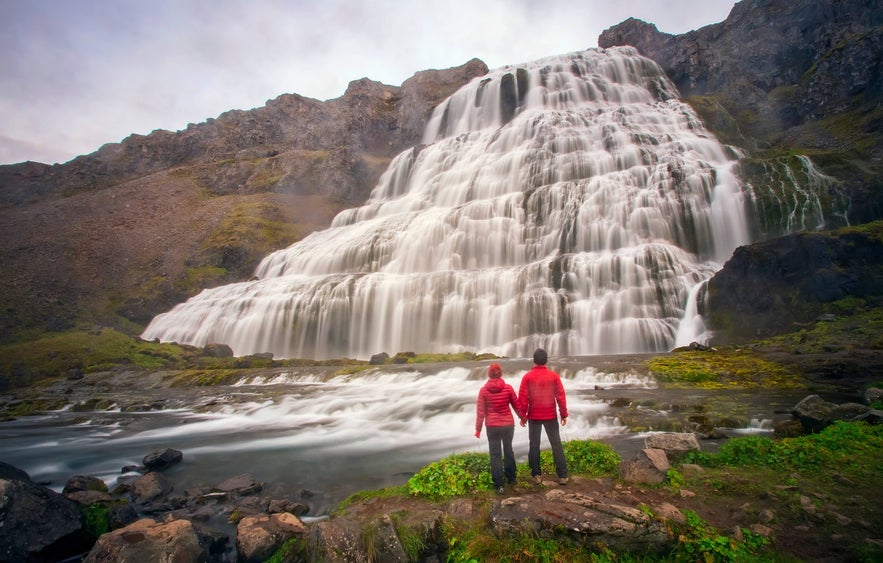 West Iceland offers the perfect mix of shopping and adventure, just waiting for you to explore. When you’re not discovering the local treasures, embark on one of many exciting tours to experience the region.
West Iceland offers the perfect mix of shopping and adventure, just waiting for you to explore. When you’re not discovering the local treasures, embark on one of many exciting tours to experience the region.
-
Horse Riding Tour through Lava Fields – Explore one of Iceland’s largest lava caves on this guided horse riding tour through Vidgelmir. Walk beneath ancient lava formations and colorful rock walls as you learn about the island’s volcanic history.
-
2-Day West Coast & Snaefellsnes Peninsula with Lava Caving & Northern Lights Tour –Discover waterfalls, black sand beaches, lava fields, and the iconic Kirkjufell mountain on this scenic two-day adventure. Perfect for travelers who want to explore the highlights of West Iceland without the hassle of driving.
-
Spectacular 2-Day Sightseeing & Northern Lights Tour of the Snaefellsnes Peninsula from Reykjavik – Experience the dramatic coastlines, volcanic craters, and charming villages of the Snaefellsnes Peninsula by day, and search for the northern lights by night. This two-day tour includes guided sightseeing and an overnight stay in West Iceland.
Local Icelandic Products
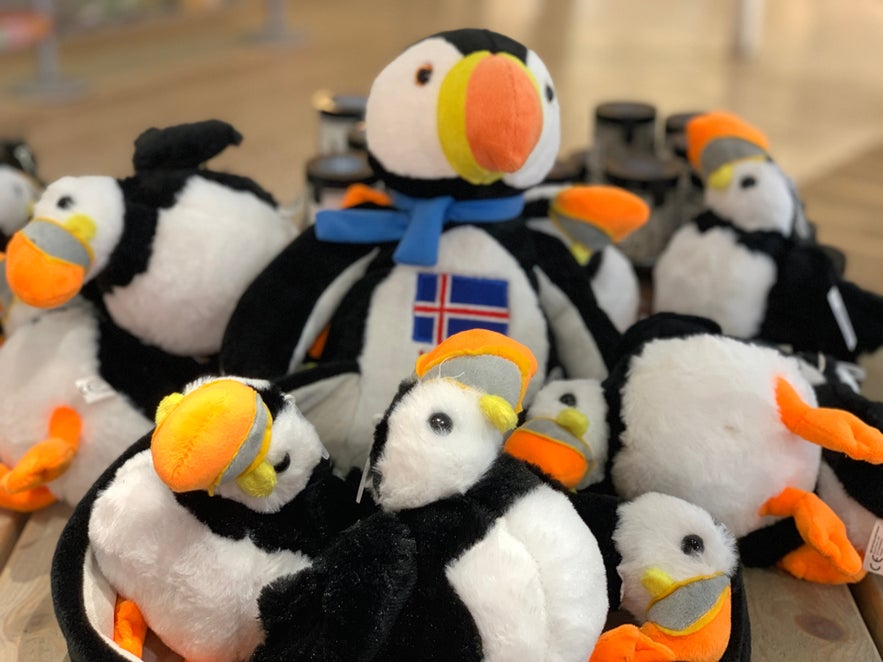 Iceland’s design and craftsmanship are deeply influenced by the country’s natural landscapes, cultural traditions, and harsh climate. There are many ways to bring home a piece of your trip, from innovative fashion to Icelandic music.
Iceland’s design and craftsmanship are deeply influenced by the country’s natural landscapes, cultural traditions, and harsh climate. There are many ways to bring home a piece of your trip, from innovative fashion to Icelandic music.
Local Clothing Brands
-
66°North – Iceland’s most famous outerwear brand, offering high-performance jackets, parkas, and fleece layers that withstand extreme weather.
-
Farmers Market – A sustainable brand blending traditional Icelandic wool craftsmanship with modern Scandinavian design.
-
Kormakur & Skjoldur – A Reykjavik-based menswear brand offering tailored suits, wool coats, and elegant accessories.
-
Inklaw – A minimalist streetwear brand, internationally recognized for its modern, avant-garde approach to fashion.
-
Kiosk – A co-operative boutique run by Icelandic designers, featuring handmade, high-quality garments and accessories that you won’t find anywhere else. This is a great spot for supporting local talent.
-
Spuutnik – Reykjavik’s most popular vintage clothing store, offering an eclectic mix of second-hand treasures, from classic Icelandic wool sweaters to retro streetwear finds.
-
Hildur Yeoman – A Reykjavík-based fashion brand known for its ethereal prints, feminine silhouettes, and collections inspired by Icelandic nature and folklore.
-
Tira – A handcrafted accessories brand creating original designs inspired by Icelandic tradition, patterns, and heritage.
-
Kron – An Icelandic design store best known for its iconic footwear, blending bold style with timeless craftsmanship.
These boutiques and designer stores are mostly located in downtown Reykjavik, particularly along Laugavegur and Skolavordustigur, making it easy to explore them all in a single shopping trip.
- Curious about Iceland’s most iconic outerwear brand? Discover the story behind 66°North
Jewelry Inspired by Nature
Icelandic jewelers craft unique, high-quality pieces that reflect the country’s raw and untamed beauty. Many incorporate materials such as lava stones, Icelandic minerals, volcanic ash, and even Arctic gemstones, while others draw inspiration from Viking heritage and Norse mythology.
-
Hildur Hafstein – A designer creating modern, minimalist jewelry influenced by Iceland’s glaciers and lava fields.
-
Orrifinn Jewelry – A dark and edgy jewelry brand that merges Icelandic folklore with a contemporary aesthetic, using raw silver, gold, and unpolished stones.
-
Vera Design – Famous for using lava beads, obsidian, and basalt, creating bold yet elegant pieces.
-
Aurum – A contemporary Icelandic jewelry brand crafting elegant, nature-inspired pieces using sustainable materials and thoughtful design.
-
Mjoll – A Reykjavík-based brand offering timeless, sustainably made clothing with clean lines and subtle nods to Icelandic aesthetics.
These handcrafted designs make for beautiful, meaningful souvenirs that carry a piece of Iceland’s history, nature, and energy.
Design and Homeware Stores
Icelandic homeware and interior design are known for their minimalist, Nordic aesthetic, often featuring natural materials and functional yet artistic designs.
-
Hrim – A beautifully curated store offering Icelandic and Nordic homeware, ceramics, textiles, and decor. It’s an ideal place to find locally crafted tableware, candles, and stylish home accessories.
-
Epal – Specializing in Scandinavian design, featuring Icelandic and international brands that highlight modern and sustainable craftsmanship.
-
Anna Thorrunn – Known for intricate, nature-inspired designs, often incorporating runic symbols and Norse mythology.
Frequently Asked Questions about Shopping in Iceland
Do you still have lingering questions about shopping in Iceland? Check out these answers to some of the most commonly asked questions.
1. What are the typical store hours in Reykjavik and other towns?
Most stores in Reykjavik follow these general hours:
-
Monday–Friday:
-
Boutiques & specialty stores: 10:00 AM – 6:00 PM
-
Shopping malls: 10:00 AM – 7:00 PM
-
Supermarkets: 9:00 AM – 8:00 PM (some open until 11:00 PM)
-
-
Saturday–Sunday:
-
Boutiques & specialty stores: 11:00 AM – 5:00 PM (Saturday), limited hours or closed on Sunday
-
Shopping malls: 11:00 AM – 6:00 PM (Saturday), 12:00 PM – 6:00 PM (Sunday)
-
Supermarkets: 9:00 AM – 8:00 PM
-
In smaller towns, stores may have shorter hours and most, including stores on Laugavegur Street, are often closed on Sundays.
2. Are stores open on holidays in Iceland?
Most stores close on major holidays such as Christmas Eve, Christmas Day, and New Year’s Day. On other holidays like Easter and Icelandic public holidays, hours may be shortened.
3. Can tourists get a VAT refund when shopping in Iceland?
Yes. Visitors can receive a VAT refund of up to 14% on eligible purchases in most stores.
To qualify:
-
Spend at least 6,000 ISK (~$44 USD) in one transaction at a tax-free store.
-
Request a Tax-Free Cheque at the time of purchase.
-
Take the unused goods out of Iceland within three months.
4. How do I claim my VAT refund at the airport?
-
Bring your tax-free forms, receipts, and purchased goods to a Tax-Free Refund Office (available at Keflavik Airport and select locations in Reykjavik).
-
A customs officer may inspect your purchases before approving the refund.
-
Receive your refund in cash, credit card reimbursement, or bank transfer.
5. Can I use credit cards in Iceland, or do I need cash?
Credit and debit cards are widely accepted throughout Iceland, even in small villages. However, some public toilets and parking meters require contactless payments or an app, and if you plan to shop at flea markets or smaller locations, it's a good idea to carry a bit of cash just in case.
6. What should I know about buying Icelandic wool products?
Icelandic wool, known as lopi, is lightweight, warm, and water-resistant. The best places to buy authentic lopapeysur (traditional Icelandic wool sweaters) are:
-
Handknitting Association of Iceland (Reykjavik) – Known for high-quality, handmade wool products.
-
UNA Local Product – Offers moder, locally made wool goods that blend traditional Icelandic materials and styles
7. What are the best souvenirs to bring home from Iceland?
Popular authentic Icelandic souvenirs include:
-
Lopapeysa sweaters – Hand-knitted from Icelandic wool.
-
Local artwork and handicrafts – Pottery, carvings, and paintings inspired by Icelandic nature.
-
Jewelry made from lava rock – Unique pieces featuring Icelandic stones and minerals.
-
Icelandic music and books – Vinyl records, literature, and poetry from local artists.
-
Skyr – A traditional Icelandic dairy product, though it has a short shelf life.
Bring a Piece of Iceland Home with You
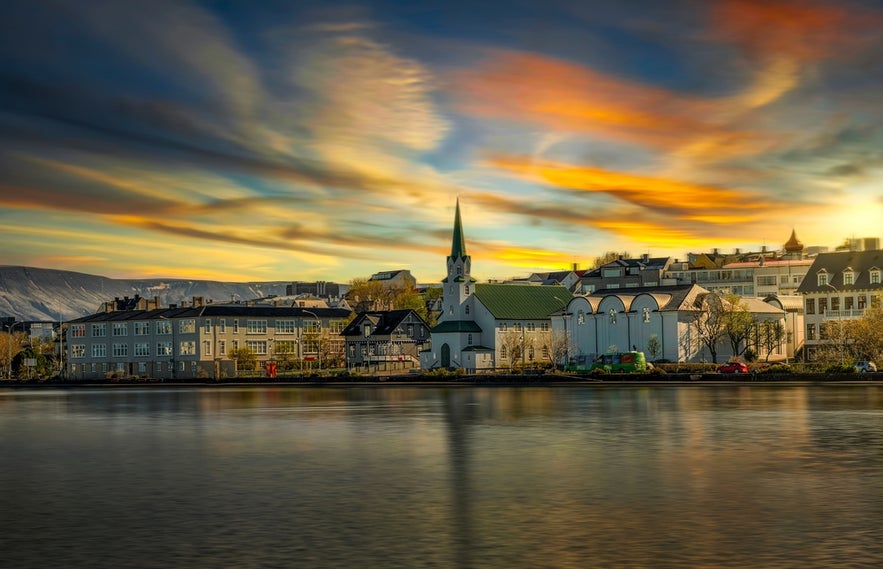 Iceland offers unique shopping experiences, no matter where you’re headed in the country, and you’re sure to find something to treasure along the way. From Reykjavik to remote villages, there are many opportunities to support local artisans and bring home authentic souvenirs. When considering what to buy in Iceland, you’ll encounter everything from handcrafted garments to inspirational art.
Iceland offers unique shopping experiences, no matter where you’re headed in the country, and you’re sure to find something to treasure along the way. From Reykjavik to remote villages, there are many opportunities to support local artisans and bring home authentic souvenirs. When considering what to buy in Iceland, you’ll encounter everything from handcrafted garments to inspirational art.
Whether you’re visiting for a short stay or an extended trip, let your feet wander into the markets and boutiques that make shopping in Iceland unforgettable. From handcrafted souvenirs to locally designed fashion, you’ll discover unique finds to bring home, keeping your memories of Iceland alive for years to come.
What’s the best thing you’ve ever bought while traveling? Do you have a favorite Icelandic brand or shop? Share your shopping stories—or ask us for recommendations—in the comments below!


